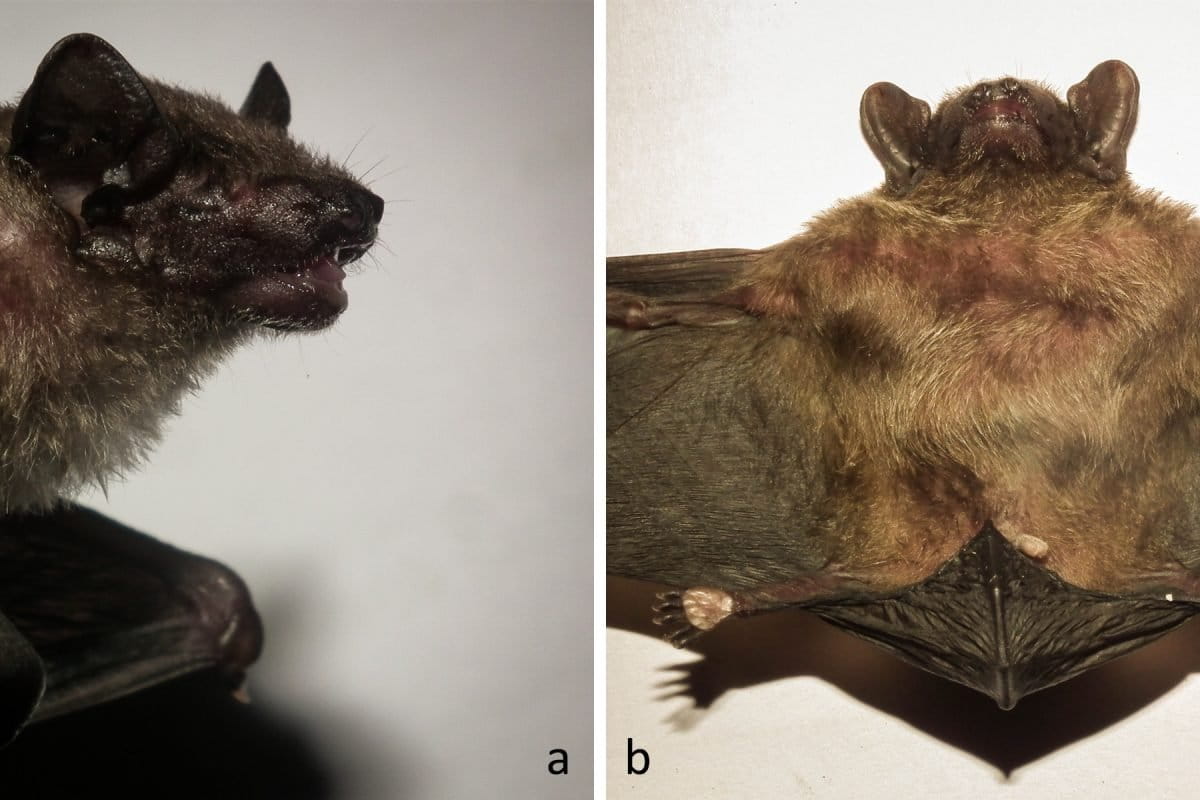- Bamboo bats, characterised by flattened skulls, roost by day inside the hollow stems (or culms) of bamboo species.
- New bamboo bat subspecies differs from other members of its species in physical appearance and genetic makeup.
- Discovery highlights the importance of conserving bamboo forests to protect species.
Researchers have identified an entirely new subspecies of bamboo bat – characterised by distinctive flattened skulls – from the Andaman archipelago, that differs from other members of its species in physical appearance and genetic make-up.
The new bamboo bat subspecies (Tylonycteris malayana eremtaga) was collected in November 2015 from Chipo, a small hamlet in North Andaman Islands as part of an Indo-UK collaborative project aimed to survey and conserve the mammalian diversity of the Andaman Islands. Following the devastating tsunami of 2004, this project was also the first large-scale survey of bats on these islands.
The team surveyed the Andaman Islands between 2014 and 2016. In November 2015, they mist-netted two small male bamboo bats near Bamboo Tekri, Chipo Village, and because they were unsure of their identity, the researchers preserved them as vouchers. Mist-netting is a capture method used by scientists to study wild birds and bats.

“When we first collected the samples, they were misidentified as Tylonycteris pachypus since that was the only species of bamboo bats known from Andamans until 2014, but we later confirmed them to be an entirely new subspecies of Tylonycteris malayana, when we did an in-depth examination,” Chelmala Srinivasulu at the Department of Zoology of the Osmania University, Hyderabad, who is the corresponding author of the study, explained.
Interestingly, T. malayana is found in many countries southeast Asian countries, but this is the first find of individuals of T. malayana from Andaman Islands. The Andaman dwellers, however, are different from other members of T. malayana, which is the reason why they have been designated as a new subspecies.
Bamboo bats squeeze into bamboo hollows
Bamboo bats are named so because of their unique fondness to roost by day in the hollows of large bamboo shoots. They are found in India, southern China, Burma, Thailand, Laos, Cambodia, Vietnam, Malaysia, Singapore and some parts of western Indonesia (Sumatra, Java, Borneo, Sulawesi) and the Philippines.
These bats have extremely flat skulls, which allows them to squeeze through slits as narrow as 4-8 millimetres. These slits are made by beetle larvae that infest bamboo culms. The bats prefer residing inside bamboo stems because it helps them to escape large predators like snakes.

According to the study authors, individuals of the new subspecies (Tylonycteris malayana eremtaga) have slightly smaller and broader skulls compared to other members of T. malayana. They are greyish-brown in colour, unlike others who have a dark brown fur. They also vary in the sequence of the cytochrome c oxidase gene, a hallmark test for differentiating members of one species from the other.
Although the Andaman & Nicobar Islands are home to a number of bat species including the greater short-nosed fruit bat (Cynopterus sphinx), the lesser short-nosed fruit bat (Cynopterus brachyotis), Tickell’s bat (Hesperoptenus tickellii), and the Andaman intermediate horseshoe bat (Rhinolophus affinis andamanensis), the newly discovered subspecies of bamboo bat is currently found only in Chipo, according to Aditya Srinivasulu, an independent research fellow who surveyed 38 localities in Andamans with other members of Chelmala’s team. He is a co-author of the study.
Bat subspecies survival linked to bamboo forests
The team could spot multiple males of the new subspecies during the two year long research suggesting the existence of a huge colony of these bats in the vicinity of Chipo.
Aditya believes that a substantial number of individuals of the new bat subspecies reside around Chipo. However, Bhargavi Srinivasulu, a postdoctoral fellow at the Osmania University in Hyderabad, who is also a co-author of the study, worries about habitat destruction of these bats.

“These bats depend largely on bamboo forests for their survival, hence, large-scale deforestation for commercial purposes, or forest fires, and increased use of pesticides in fringe villages could have a negative impact on the survival of these species in the future,” Bhargavi Srinivasulu warned.
She suggests that locals should be encouraged to conserve the new bat species as it could benefit them in a significant way in the long run. “This is because bamboo bats mainly feed on insects and this is likely to help save their agricultural produce from pests in the long run,” she said.
CITATION:
Srinivasulu C., Srinivasulu A., Srinivasulu B., Jones G. (2018). A new subspecies of the Malayan Bamboo Bat (Chiroptera: Vespertilionidae: Tylonycteris malayana eremtaga) from the Andaman Islands, India. Journal of Threatened Taxa, 10 (1): 11210–11217.